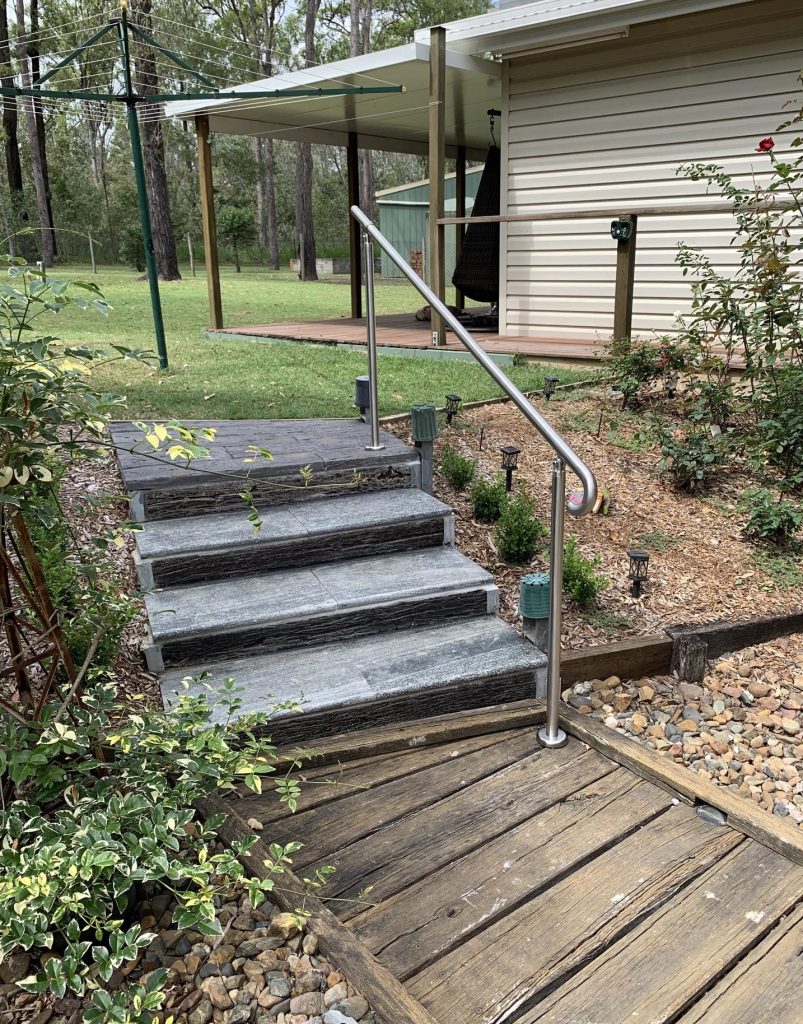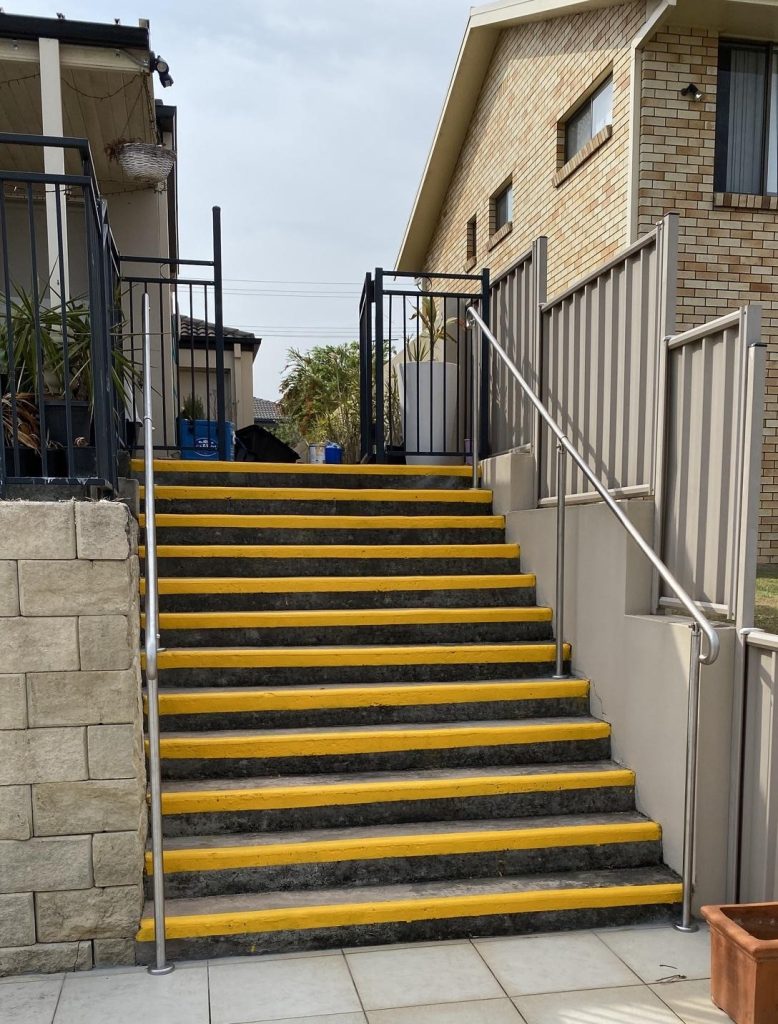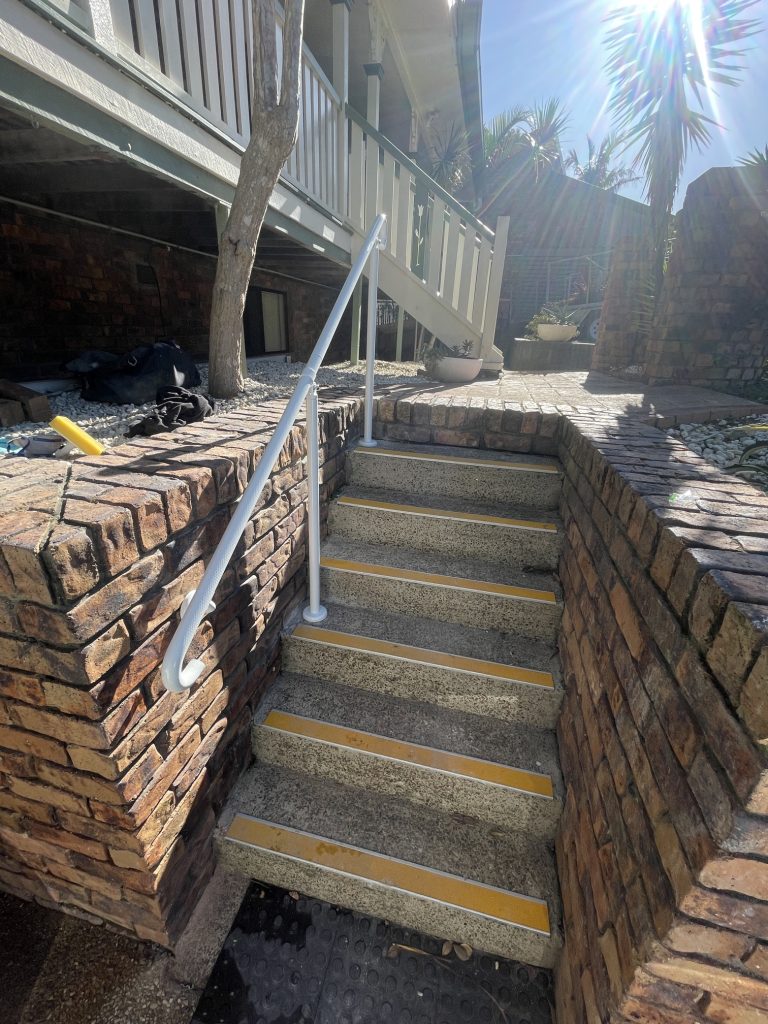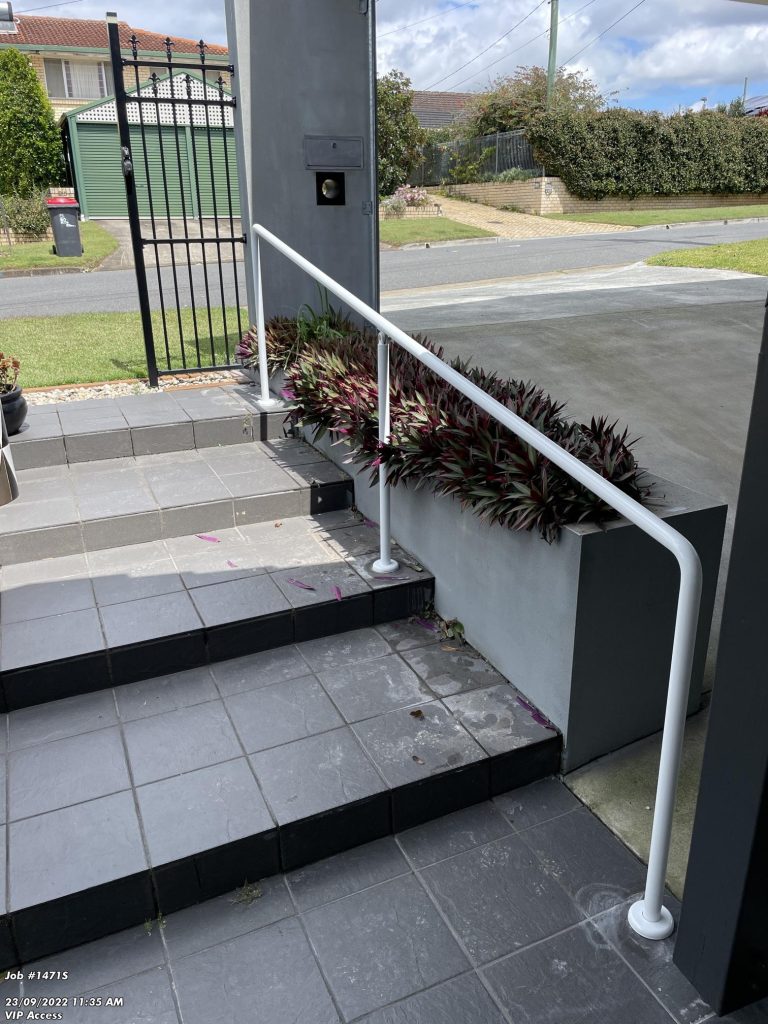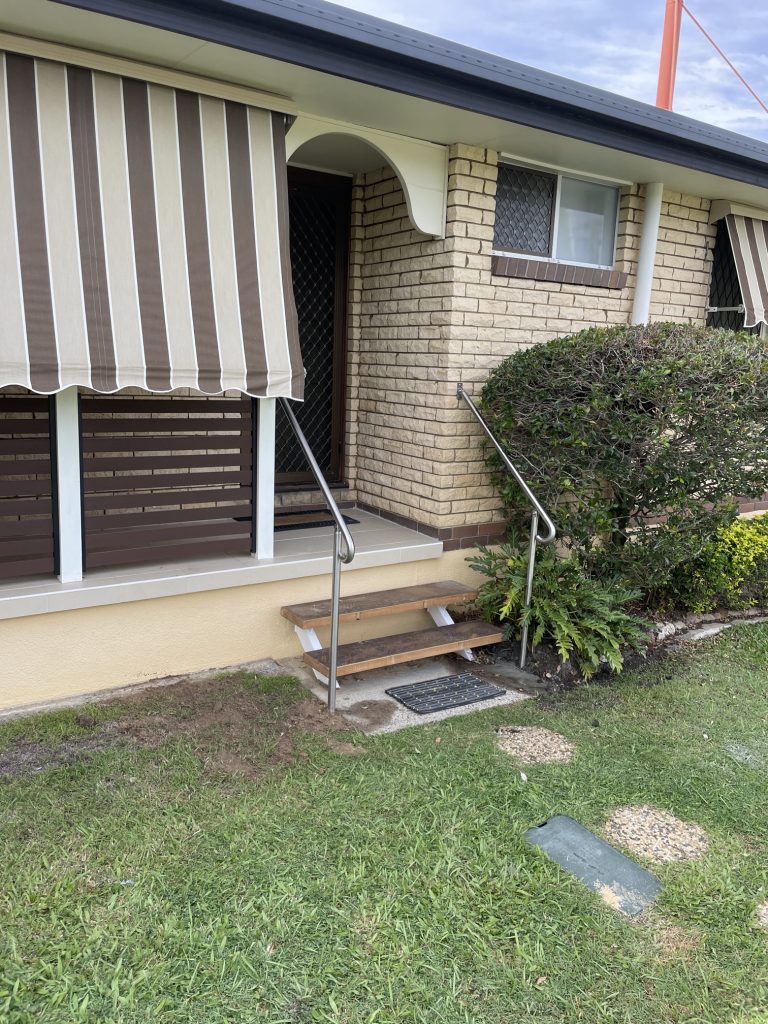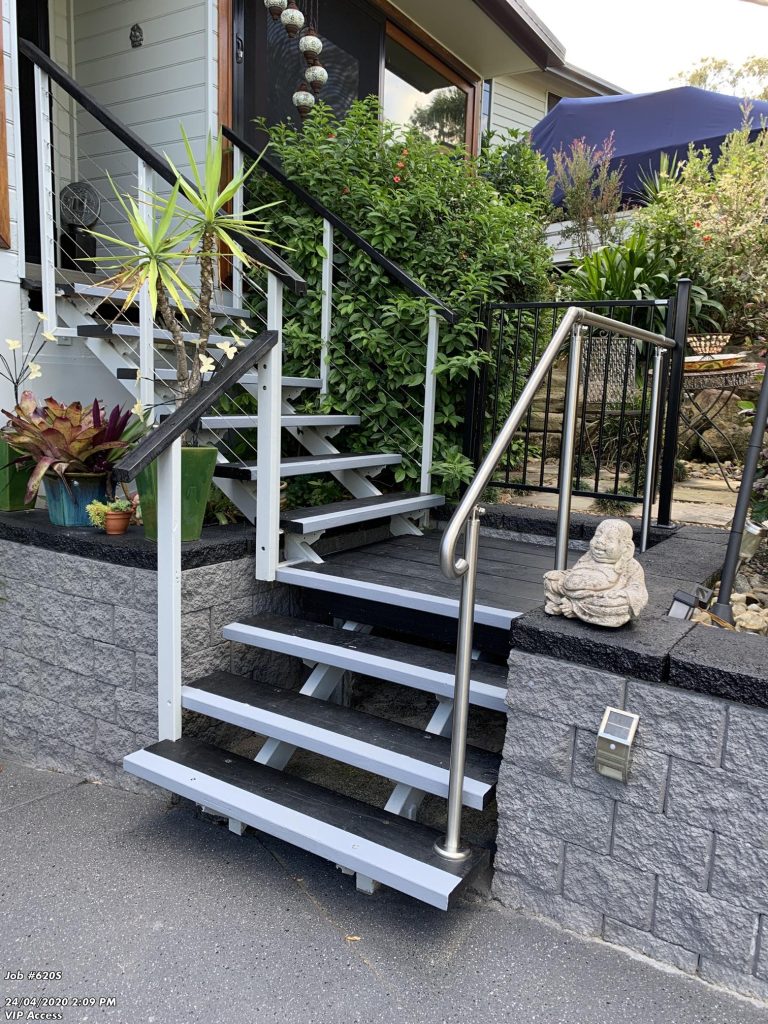Custom Handrails for Steps
BESPOKE HANDRAILS FOR STAIRS: ENHANCING ACCESSIBILITY INDOORS AND OUTDOORS
For many people, the potential hazards of steps and uneven surfaces may not be a significant concern in their daily lives. However, individuals facing mobility challenges understand that even minor details can make a world of difference. This is where handrails for steps play a crucial role.
Handrails are an essential feature in creating accessible homes and buildings for good reason. Thoughtfully designed handrails provide support and stability when ascending or descending stairs. They also serve as vital safety features for ramps, flat surfaces, and areas prone to wetness or slipperiness. Australian standards provide guidance for the optimal use of handrails.
WHEN ARE HANDRAILS NECESSARY?
In Queensland, NCC Part 3.9.2 Barriers and handrails determine when handrails are required:
Indoors and Outdoors: Handrails must be in place when a staircase has a minimum of four risers and three treads. Typically, with this number of steps, the distance from the ground to the top of the staircase is around one metre.
The same requirements are applicable for outside & inside the building.
Handrail Height: The top of the handrail must be not less than 865mm or greater than 1000mm from the nosing of a stair or the plane of the finished floor level on a ramp, walkway, or landing. And the height shall be consistent throughout the ramp, stair, and landing.
Handrails need to be easy to firmly grasp if a person loses balance. Stainless steel is an excellent material choice due to its strength and low maintenance requirements.
WHAT ARE THE DIFFERENCES BETWEEN OUTDOOR AND INDOOR HANDRAILS?
Both indoor and outdoor handrails in Queensland are required for steps with a minimum of four risers and three treads. However, the choice of handrail material should be considered carefully.
OUTDOOR HANDRAILS:
Stainless Steel: Many people prefer using durable stainless steel for outdoor handrails. It is robust and requires minimal upkeep. Alternatively, decorative metals like wrought iron can be used if they do not compromise the integrity of the handrail.
Timber While timber offers an appealing look for handrails, functionality must take precedence in accessibility projects. Timber may crack over time, posing a fall risk. Porous materials will require weatherproofing and ongoing maintenance.
INDOOR HANDRAILS:
Timber: Timber is a popular choice for indoor handrails due to its durability and ability to be finished to match the decor. However, the anchors of timber handrails may loosen over time, creating safety concerns, especially in bathrooms or wet rooms where humidity can cause gaps to appear.
Stainless Steel: For indoor areas with humidity and fluctuating temperatures, stainless steel handrails are recommended. Regular inspections should ensure that the anchors are secure. Knurled bars can assist with gripp.
WHEN CAN VIP ACCESS ASSIST WITH HANDRAILS?
VIP Access can help eligible individuals achieve greater safety and independence in their homes, significantly impacting their ability to lead autonomous lives. Handrails, often underrated in their assistance, provide immeasurable value to those lacking the physical strength to navigate stairs independently.
Handrails benefit not only the elderly and individuals with progressive illnesses but also those recovering from surgeries or injuries, people with balance issues like Vertigo, and anyone traversing slick surfaces.
If you require the installation of handrails or want to ensure the safety of existing ones, consider reaching out to VIP Access. With extensive experience in modifications, their team of mobility experts can assist you in proper handrail installation and ensure your safety.
